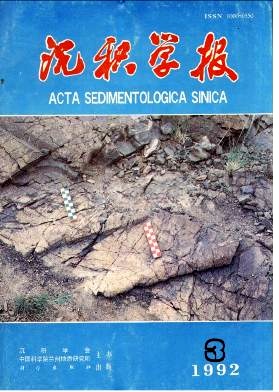Single Factor Analysis and Comprehensive Mapping Method -Methodology of Lithofacies Paleogeography
- Publish Date: 1992-09-10
Abstract: There are many methods of studying and mapping of lithofacies paleogeography. This paper will describe the methodology of lithofacies paleogeography that was advocated by the present author, "Single factor analysis and comprehensive mapping method", with the example from the lithofacies paleogeographic study and mapping of Majiagou Group of Middle Ordovician of Ordos Region. By " single factor" , meant is the factors which can independently reflect certain aspects of the sedimentary environments. Single Factor Analysis and Comprehensive Mapping Method includes three steps. First, earnest petrological and petrographical study of each section should be made in order to obtain various firsthand complete and reliable quantitative and qualitative data, especially quantitative data, and to understand the characteristics of sedimentary environments of each stratigraphical interval in the section. Second, select those factors which can independently reflect some aspects of sedimentary environments ( i. e, single factors) from these quantitative data. And then the percentage content of each single factor in each section of the whole area, followed the requisite mapping unit, should be calculated to draw out various corresponding fundamental single factor maps. They are mainly various isoline maps. These fundamental single factor maps can quantitatively reflect different characteristics of sedimentary environments of the slratigraphical interval of the area. This is Single Factor Analysis. Third, Having synthesized these fundamental single facotr maps and combined with other quantitative and qualitative data and other regional geology data, through all-sided analysis and comprehensive judgement, with the dross discarded and the essential selected, the false eliminated and the true retained, the lithofacies paleogeographical maps of the mapping unit of the area can be compiled finally. This is Comprehensive Mapping. The core of this method is quantification. That is, on the basis of quantitative data, starting with analysis of quantitative fundamental single factor maps, then through comprehensive analysis and judgement, finally the quantitative lithofacies paleogeographical maps can be compiled. In these lithofacies pqleogeographicai maps, the determination of each plaeogeographical unit is based on definite quantitavtive data. This type of lithofacies paleogeographical maps is therefore no loger sketchy. This makes lithofacies pqleogeographicai maps developed into a quantitative stage. The following single factors are used in this paper: thickness, terrigenous materials, shallow-water grains, penecontemporaneous dolostones, gypsum, colors and so on. On the basis of various fundamental single factor maps of each formation of Majiagou Group of Ordos Region, combined with other quantitative and qualitative data, through all- sided analysis and judgement, the lithofacies paleogeographical maps of Majiagou Age I to VI of Middle Ordovician of Ordos Region wrer drawn out. The lithofacies paleogeography of Majiagou Age I may be generalized by following: Outside the lands wre flats (dolomite flats, etc); Inside the flats were lakes (gypsum salty lakes and gypsum lakes); Outside the flats were banks (embryonkc banks); Outside the banks were seas (open seas) and outside the seas were troughs (deep-water troughs). In Majiagou Age Ⅱ, the transgression was enlarged so that the whole area was open sea except three small lands. In the open sea there were some embryonic banks and penebanks scatterred. The lithofacies plaeogeography of Majiagou Age Ⅲ and Ⅴ were similar to that of Majiagou Age I. The lithofacies paleogeography of Majiagou Age n and IV were similar to that of Majiagou AgeⅡ. Generally speaking, form Majiagou Age Ⅰ to Ⅵ, three transgressions and three regressions appearred alternatively. They constructed a series of complete cycle of transgression and regression of triple assemblage and three similar, opposite and complementary, antithetical assemblages of lithofacies paleogeography in Majiagou Age of Middle Ordovic
| Citation: | Feng Zengzhao. Single Factor Analysis and Comprehensive Mapping Method -Methodology of Lithofacies Paleogeography[J]. Acta Sedimentologica Sinica, 1992, 10(3): 70-77. |






 DownLoad:
DownLoad: